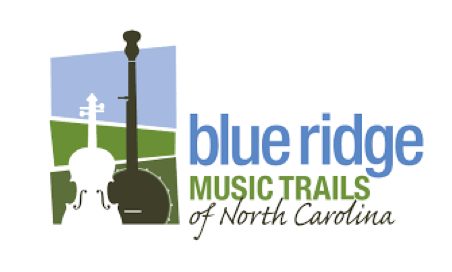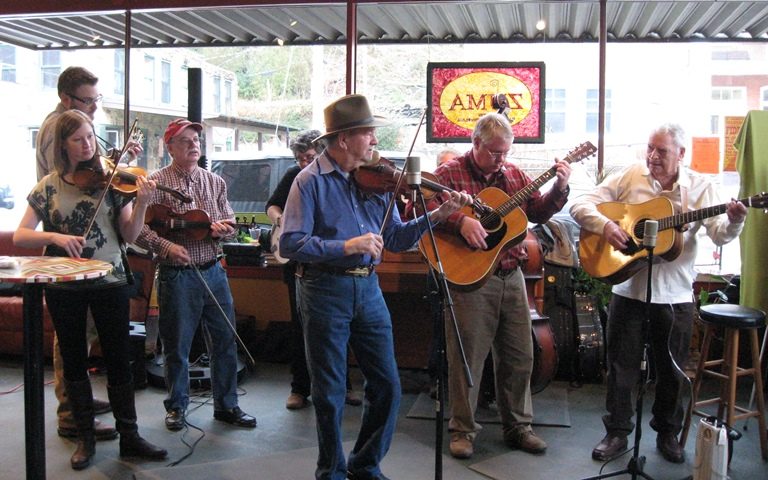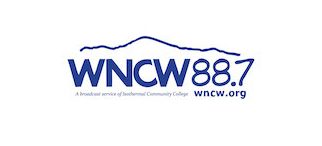About the Blue Ridge Music Trails of North Carolina
This website is your guide to finding great musical experiences in the mountains and foothills of North Carolina.
As you explore the Music Trails, be sure to pick up a copy of the Blue Ridge Music Trails of North Carolina guidebook which makes a great travel companion, souvenir, or gift. To get the latest news about the region’s traditional music events and artists, sign up for our e-newsletter.
Traditional music is flourishing across many parts of America, but in the mountains and foothills of North Carolina, more so than elsewhere, the music is part of the fabric of community life.
If you look around, you’ll find:
- Fiddles and banjos ringing on stages and front porches every night of the week
- Music halls where local musicians and music lovers gather to swap tunes and stories
- Teams of cloggers, young and old, dancing up a storm
- Ballads being sung as they were hundreds of years ago
Music traditions continue to be handed down in families and communities; at the same time, musicians are moving here from other parts of the country to be at the heart of these wonderful traditions.
You’ll find lots of folks making music—from seasoned, master musicians and enormously talented youngsters to exuberant beginners and dedicated back porch pickers.
Most importantly, the music here is to be shared. Opportunities to listen in and to join in are plentiful.
The project
The Blue Ridge Music Trails of North Carolina is an initiative led by the Blue Ridge National Heritage Area Partnership, a 501(c)(3) nonprofit organization, and the North Carolina Arts Council, a division of the North Carolina Department of Cultural Resources. Many, many partners across Western North Carolina—arts councils, tourism agencies, music venues, event organizers, musicians, and dancers—are participating in the effort. This website is operated by the Blue Ridge National Heritage Area Partnership.
The vision
Our vision is to create an environment in Western North Carolina where the rich music traditions of the region are sustained and utilized in appropriate ways to improve the lives of residents; where traditional musicians thrive and feel supported in their creative lives; where visitors and residents alike can appreciate and enjoy the richness of the music; and where youth are provided with first-hand traditional music experiences that spark interest in the music of the region.







